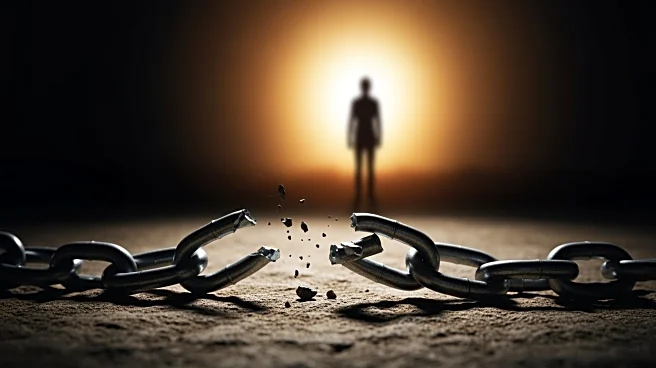What's Happening?
Nimrod Cohen, who was held captive by Hamas for 738 days, has returned home to Israel. His mother, Vicky Cohen, shared insights into the brutal conditions he faced during his captivity, including psychological warfare and physical torture. Despite being
told by his captors that Israel had abandoned efforts to secure his release, Nimrod was surprised to learn about the rallies and events held in his support upon his return. His mother recounted a particular incident where Nimrod resisted attempts by his captors to alter his appearance to resemble them, showcasing his courage and defiance. The emotional reunion with his family was marked by overwhelming joy and relief, as Nimrod began his journey of recovery and rehabilitation.
Why It's Important?
The release of Nimrod Cohen highlights the ongoing complexities and human impact of hostage situations involving Hamas. It underscores the psychological and physical toll on hostages and their families, as well as the broader geopolitical implications for Israel and its security policies. The story of Nimrod's captivity and return serves as a poignant reminder of the resilience required to endure such ordeals and the importance of international efforts to resolve hostage crises. The emotional and physical recovery process for freed hostages is crucial, as it affects their reintegration into society and their long-term well-being.
What's Next?
Nimrod Cohen's family is focused on his rehabilitation, which includes physical therapy and emotional support to help him regain his strength and recover from the trauma. The family continues to advocate for the release of other hostages still held by Hamas, emphasizing that their fight is not over until all captives are returned home. This ongoing advocacy may influence public opinion and policy decisions regarding negotiations and strategies to secure the release of remaining hostages.
Beyond the Headlines
The ordeal faced by Nimrod Cohen and his family highlights the ethical and humanitarian challenges in hostage situations. It raises questions about the psychological impact on hostages and their families, the role of media exposure in advocacy efforts, and the balance between privacy and public support. The story also reflects the broader cultural and emotional dimensions of resilience and recovery in the face of adversity.















